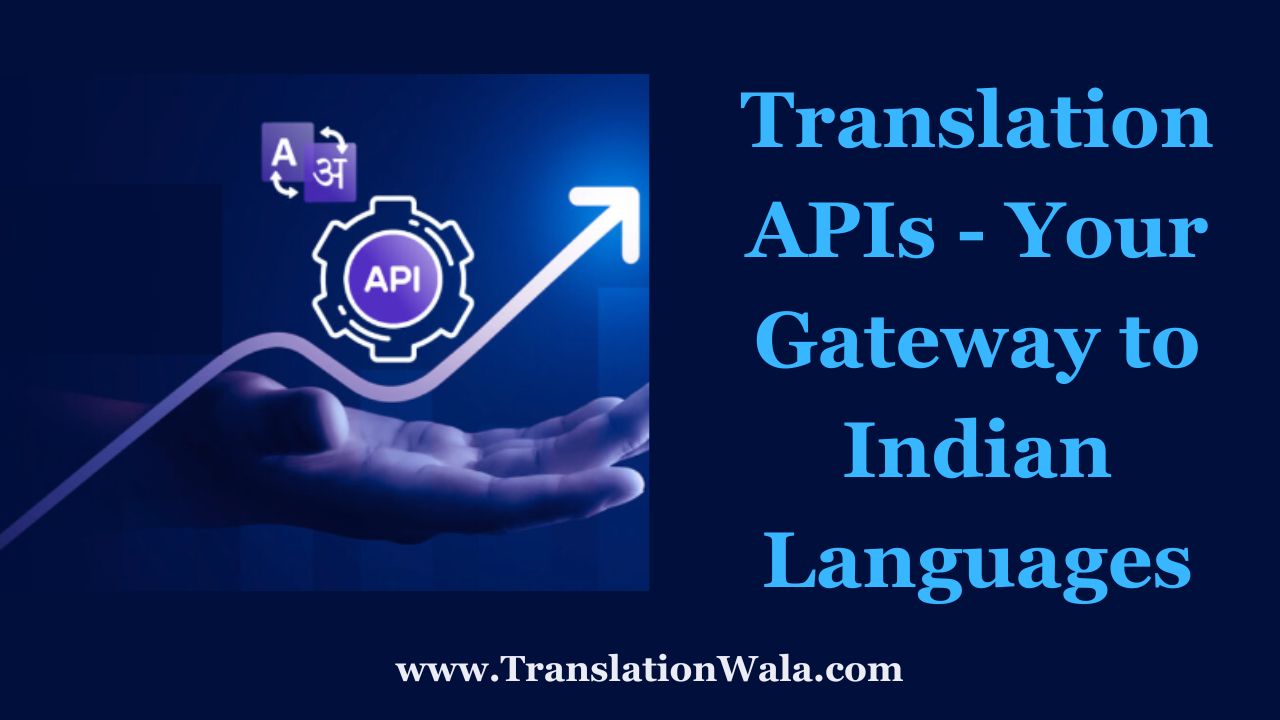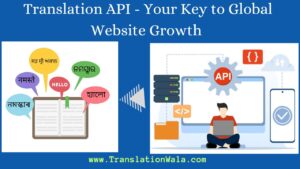Translation APIs: India has a lot of different cultures and languages. More than 120 main languages and 1500 dialects are spoken all over the country. There are a lot of different languages spoken in India, which makes it hard for companies and groups to reach more people. Translation services have become necessary if you want to talk to people in their native languages.
The Role of Translation APIs
There is a big language gap in India, but Translation APIs, which are also called machine translation (MT) APIs, can help. By giving automated access to translation tools through these APIs, developers can add translation features to their websites, apps, and software. Businesses can easily change content into different Indian languages with the help of a translation API. This lets them reach more people and improves the user experience overall.
Key Benefits of Translation APIs for Indian Languages
- Improved Accessibility: Translation APIs let people who speak Indian languages access information, which helps businesses and organizations reach more people.
- Enhanced User Experience: Translation APIs make users happier and more engaged by giving them information in their own languages.
- Cost-Effectiveness: Translation APIs are a cheaper alternative to standard translation services that use people to do the work.
- Real-time Translation: Real-time translation is supported by many translation APIs, which lets people instantly talk to each other in different languages.
- Scalability: Translation API can handle a lot of translation requests, which makes them good for big projects.
- API Integrations: Translation API can be added to a lot of different platforms, like websites, mobile apps, and business systems.
- Language Support: There are many Indian languages that can be translated using APIs. These include Hindi, Bengali, Tamil, Telugu, Marathi, Gujarati, Kannada, Malayalam, Punjabi, and Odia.
- Continuous Improvement: As machine learning and natural language processing (NLP) tools get better, translation API keep getting better too.
Also Read: Build Brand Presence in India’s Regional Markets

Applications of Translation APIs in India
In India, translation APIs can be used for many things, such as:
- Website Localization: Businesses can make their websites available in Indian languages so that viewers from India can have a more personalized experience.
- Mobile App Localization: Indian languages can be added to mobile apps to reach more people and keep users more interested.
- E-commerce Localization: To make the shopping experience better for customers and boost sales, e-commerce sites can adapt customer reviews, product details, and the checkout process into Indian languages.
- Customer Support Localization: Support for people can be given in Indian languages so that they can get help in their own language.
- Government Communication: Translation API let government agencies translate official papers, websites, and messages into Indian languages. This makes them easier for people to access and more open.
- Education and Training: Translation API can be used to translate training and educational materials into Indian languages, which makes it easier for people to get an education and improve their skills.
- Entertainment and Media: Media companies can reach more people by translating material into Indian languages, such as subtitles, audio, and other types of content.
- Healthcare: APIs for translation can be used to translate medical data, patient information, and healthcare messages into Indian languages. This makes them easier for people to access and better care for patients.
Also Read: Case Studies of Successful Brand Transliteration
Choosing the Right Translation API for Indian Languages
When choosing an API for translating Indian languages, think about the things below:
- Language Support: Make sure that the API works with the Indian languages that you need.
- Translation Quality: Check how well and how accurately the API can translate between Indian languages.
- Pricing: Think about the API provider’s price plan and the different levels of pricing they offer.
- Ease of Use: Check out the API’s literature, lessons, and help materials to see how easy they are to use and integrate.
Conclusion
The way companies and groups talk to their Indian public has changed a lot because of translation API. Translation APIs help people who don’t speak the same language communicate with each other more easily. This leads to more interest in India’s rich language environment. As translation technology keeps getting better, translation API for Indian languages will become even more useful. This will help more people take advantage of the huge chances that India has to offer.



